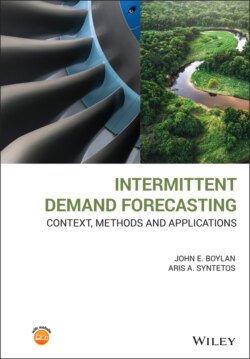Читать книгу Intermittent Demand Forecasting - John E. Boylan - Страница 72
3.4.1 Cost Factors
ОглавлениеInventory holding costs can be assessed at SKU level based on the opportunity cost of capital, warehousing space costs, costs of potential pilferage and spoilage, and costs of stock obsolescence. Of these components, the opportunity cost of capital is generally the largest. Gardner (1980, p. 43) remarked on the difficulty of assessing the cost of capital, describing it as: ‘…a highly subjective measure, which depends on the risk environment of the firm and management goals for rates of return on investment’. The difficulty of measuring inventory holding costs is well recognised, although there may be benefits of organisations thinking through these costs as thoroughly as they can.
The costs of stockouts can be assessed at SKU level, based on a penalty cost for backordering and the delay of fulfilment of an order line for a period of time. As mentioned in Chapter 2, there are two ways of estimating these costs. There can be a fractional charge of the unit cost per unit short (regardless of the duration of the stockout), or there can be a fractional charge per unit short per unit time. Both approaches suffer from the difficulty of making the charge reflect loss of customer goodwill, which is just as hard to quantify at SKU level as at an aggregate level.
For some decisions, such as to stock or not to stock an item, it is common to use an approach based on holding and backordering costs, notwithstanding the difficulty in measuring them. To set OUT levels, we suggest that it is more straightforward to adopt a service‐driven approach, which will be the focus for the remainder of this chapter.
